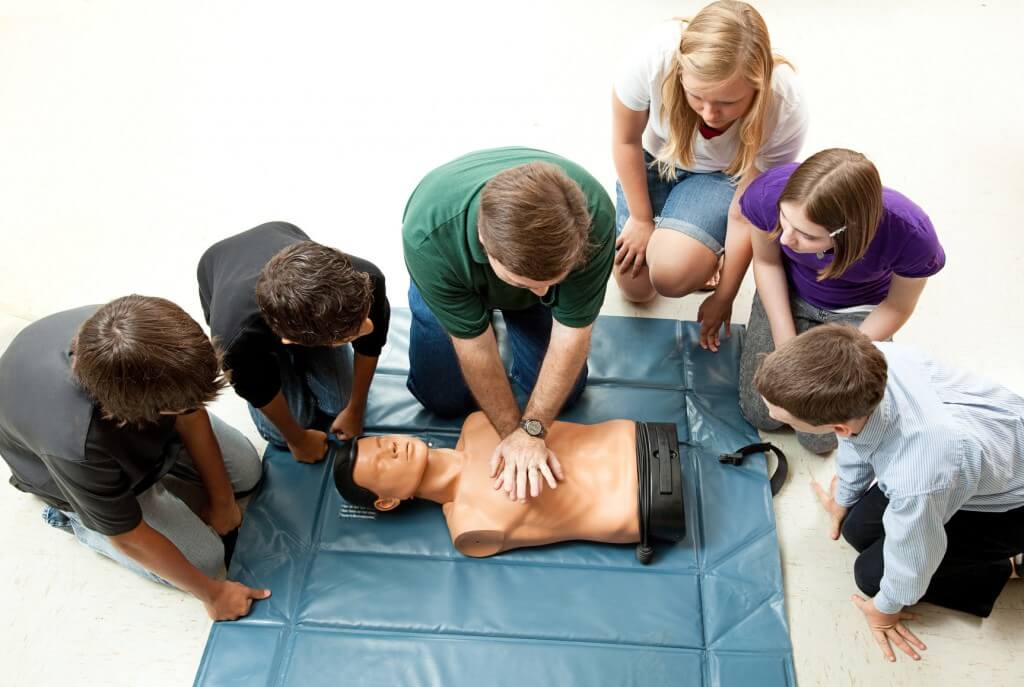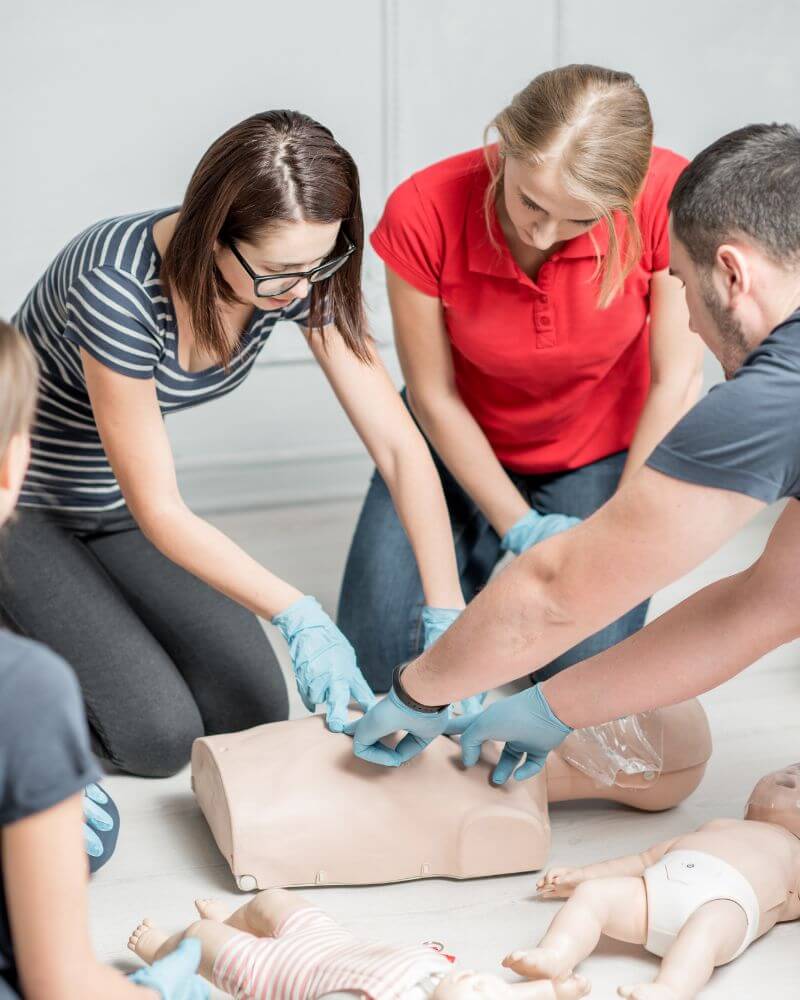Introduction
In Sydney CBD First Aid Course Near Me our fast-paced globe, emergencies can strike anytime, whether in your home, work, or in public rooms. Being prepared to react efficiently can make the difference between life and fatality. This is where emergency treatment enters play. While lots of view a first help course as just a need for certain occupations or an enhancement to their return to, it expands much beyond that. It encompasses skills that equip people to act with confidence during emergencies.
First help knowledge not only saves lives however also improves community safety and builds strength among individuals of every ages. In this post, we will explore the complex duty of emergency treatment in everyday life-- dissecting its significance, the training included, and just how it equips people with essential skills that resonate with different facets of life. So, buckle up as we dive much deeper right into The Duty of Emergency treatment in Everyday Life: Greater Than Just a Certificate
The Role of First Aid in Everyday Life: More Than Simply a Certificate
Understanding Initial Aid
First aid describes the prompt care given to someone that has endured an injury or illness prior to specialist medical aid arrives. The objective is straightforward: maintain the client's problem and avoid further damage. This may entail standard strategies like applying plasters, carrying out mouth-to-mouth resuscitation (Cardiopulmonary Resuscitation), or utilizing an Automated External Defibrillator (AED).
It's important to recognize that emergency treatment isn't practically physical injuries; it incorporates psychological wellness emergency situations as well. For instance, giving assistance throughout an anxiety attack or recognizing signs of shock can additionally belong to efficient very first aid.
The Importance of Emergency treatment Training
Why must everyone take into consideration enrolling in an emergency treatment course? The response hinges on readiness. Emergency situations are unforeseeable; however, being educated ways you can respond quickly and efficiently when they occur.
Confidence Building: Knowing exactly how to handle emergencies imparts confidence not just in yourself yet likewise assures those around you. Community Security: Educated individuals contribute dramatically to overall community safety and security by supplying aid during crises. Legal Defense: Lots of areas have Do-gooder laws that secure those that supply assistance in emergencies from legal repercussions.The Structure of a First Aid Course
A regular first aid course frequently covers:
- Basic CPR techniques Use of AEDs Bandaging wounds Responding to choking cases Treating burns and fractures Managing shock and seizures Mental wellness very first aid
Courses might differ from basic training sessions lasting a few hours to comprehensive multi-day workshops where individuals gain a first help certificate upon completion.
Why Select mouth-to-mouth resuscitation Courses?
CPR courses especially focus on training lifesaving methods that can be used when someone quits breathing or their heart quits whipping.

Key Components:
- Adult, youngster, and baby mouth-to-mouth resuscitation techniques Rescue breaths vs. breast compressions Recovery positions
According to various researches, timely CPR can increase or even triple the possibilities of survival for heart attack sufferers. As a result, spending your time into a CPR course is most certainly worthwhile.
How to Select the Right Course
With many organizations using training worldwide, choosing the right course may appear complicated. Here are some suggestions:
Accreditation: Make sure the institution is recognized and accredited. Course Web content: Review what particular skills are taught. Teaching Style: Some individuals discover better via hands-on method; check if practical demos are included. Location & Timing: Go with courses that fit your schedule without added stress.First Aid Skills Everyone Must Master
1. Choking Management
Choking is among one of the most common emergencies came across daily; thus recognizing exactly how to do abdominal drives (the Heimlich maneuver) can be lifesaving.
Steps:
Assess the situation-- ask if they're choking. Stand behind them, position your arms around their waist. Make a hand with one hand and area it over their navel. Grasp the fist with your other hand and thrust internal and upward up until they cough or breathe again.2. Executing CPR
As laid out previously, mouth-to-mouth resuscitation is essential for anyone experiencing cardiac arrest:
Steps:
Call emergency solutions immediately. Begin breast compressions at a rate of 100-120 compressions per minute. If educated, give rescue breaths after every 30 compressions (30:2 ratio).3. Treating Wounds
Wound care might appear unimportant but knowing how to clean and dress injuries correctly can prevent infections:
Steps:
Wash hands thoroughly. Apply mild pressure with sterilized gauze until hemorrhaging stops. Clean around the injury with soap and water before applying an antibiotic lotion and dressing.Mental Wellness First Aid
Emergencies aren't exclusively about physical injuries; psychological health and wellness crises need immediate attention too!

Recognizing Indicators of Distress
Understanding indications such as severe anxiety or visible distress assists you interfere suitably:
Listen actively without judgment. Offer confidence while encouraging professional help if necessary.Providing Support Throughout Crises
Be tranquility yet assertive; directing somebody via panic attacks using basing techniques can reduce their symptoms significantly.
The Effect on Families
First help expertise plays an invaluable function within families-- developing satisfaction regarding safety while nurturing obligation amongst kids as well.
Teaching Youngsters Regarding First Aid
Instilling these abilities early guarantees kids grow up understanding how important it is to look after themselves and others:
Use age-appropriate language. Engage them with enjoyable tasks like role-playing circumstances where they use fundamental techniques!Workplace Safety Culture
Employers need to prioritize first-aid training within their workplace settings for various reasons:
1) Conformity with Occupational Safety Rules: Several workplaces have to stick purely to safety and security criteria requiring skilled personnel all set during emergency situations-- decreasing responsibility threats overall!
2) Increased Worker Morale: Employees really feel valued when firms invest in their wellness-- creating solid team dynamics where participants watch out for each and every other's welfare cultivates trust!
Conclusion
In final thought, accepting emergency treatment knowledge goes beyond simply acquiring qualification-- it symbolizes readiness in the direction of life's changability whilst nurturing individual growth along the way!
Investing time right into learning skills such as mouth-to-mouth resuscitation not just improves private abilities but strengthens communities against potential situations prowling around every corner! Inevitably ending up being complete saves lives while promoting much healthier cultures-- making it extremely important that everyone thinks about enrolling in detailed programs focused on both general 'first-aid' & & specialized 'mouth-to-mouth resuscitation training courses'.

Frequently Asked Questions
What is included in a typical emergency treatment course?
A standard emergency treatment course usually consists of guideline on fundamental injury treatment, CPR techniques for adults/children/infants, choking monitoring procedures in addition to taking care of shock/seizures successfully consisting of useful drills!
How long does it take to complete a CPR certification class?
Most CPR accreditation classes range from 4-- 8 hours depending upon whether they cover adult/child/infant specifics! Examine regional offerings for specific timing information tailored particularly towards your needs/preferences!
Is my first-aid certification valid indefinitely?
No! Many accreditations have expiration dates (typically 2 years); normal revival ensures upgraded data base on present guidelines/best practices!
Can I educate others once I finish my training?
While you gain valuable insights throughout these programs; official training requires additional qualifications/certification from identified companies regulating instructor-led programs!
Are online training courses efficient compared to standard classes?
While online learning gives flexibility & & convenience; hands-on technique stays important specifically regarding skill-development required together with theoretical understanding-- hybrid techniques frequently produce ideal results!
By incorporating these vital techniques into our daily lives we can foster safer environments all over! So why wait? Subscribe today for any kind of offered 'First-Aid' & & 'CPR' training courses-- you'll thank on your own later!